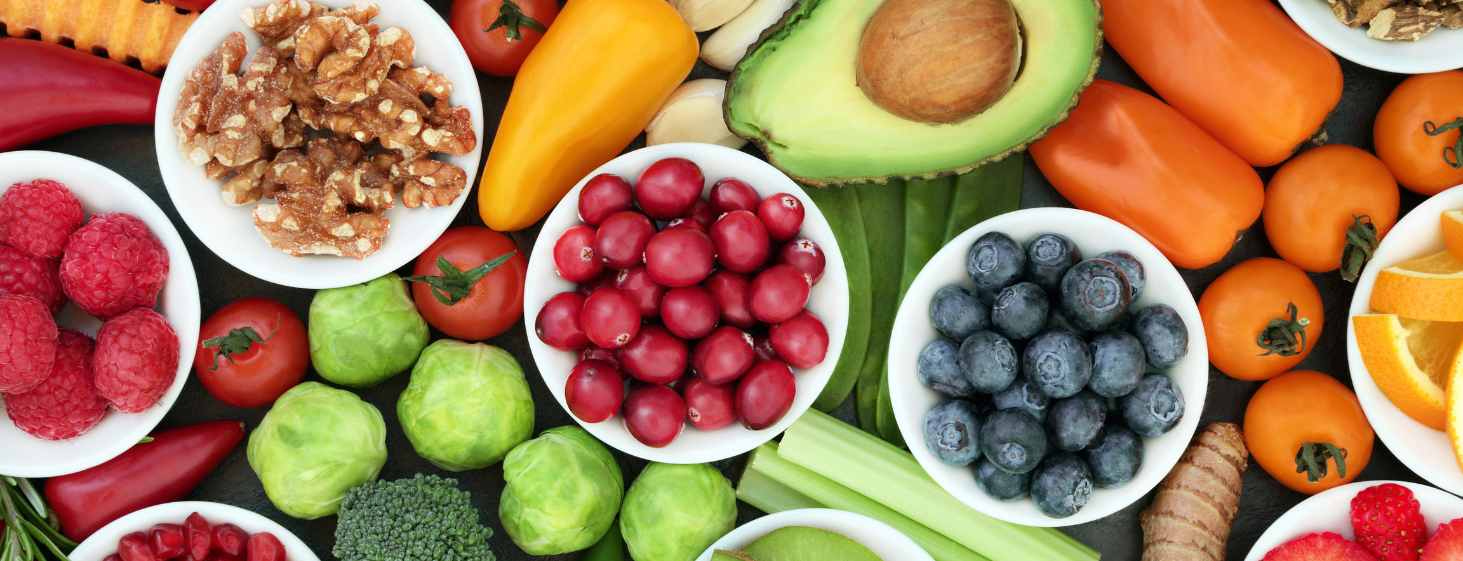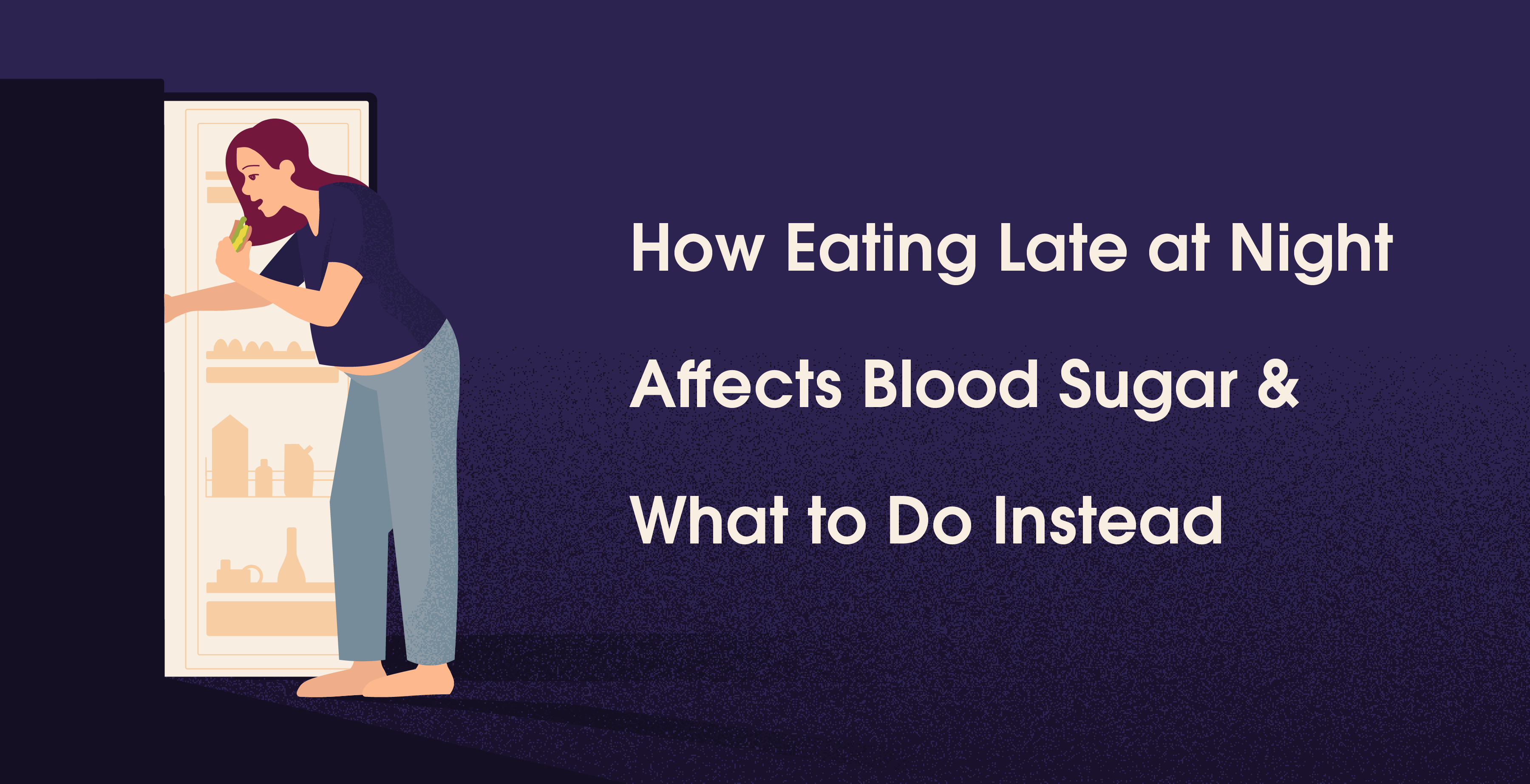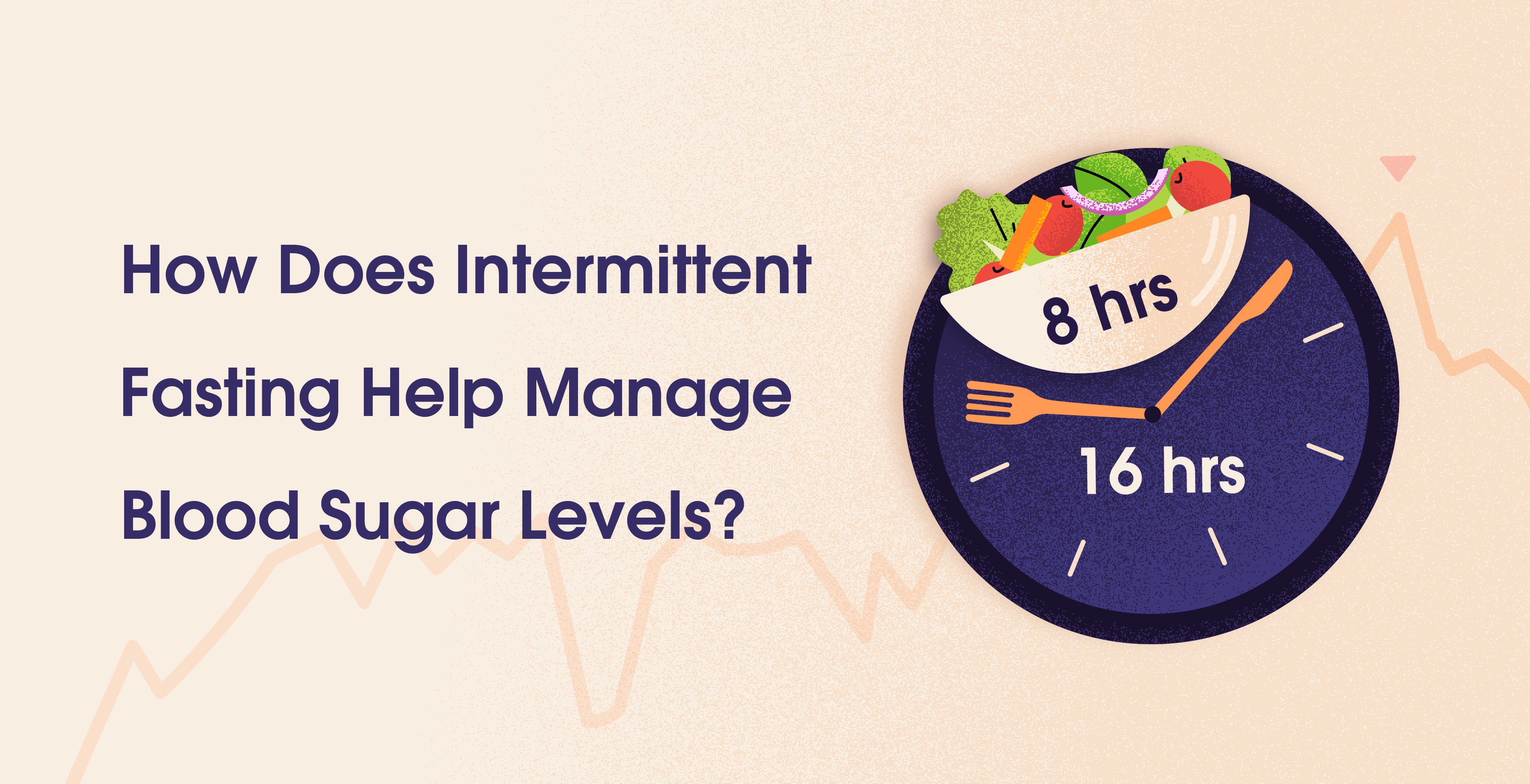Prediabetes Diet Essentials: A Comprehensive Meal Planning Guide
Mar 7, 2024
Ashima Raizada



Table Of Contents
Every cloud has a silver lining, right? Well, that's true for "Prediabetes" and "Diabetes" too. So, what's prediabetes? It's when your blood sugar levels are a bit high but not quite in the diabetes danger zone.
Now, here's the exciting part - nutrition is your superhero in the prediabetes world! There's a fantastic thing called a prediabetes diet. In 2020, a study split the beans: a healthier diet can slash the risk of prediabetes getting worse by a whopping 40-70%.(1)
Highlights
Prediabetes occurs when blood glucose levels are elevated but don't meet the criteria for diabetes.
Nutrition plays a crucial role, with healthier dietary habits reducing the risk of Prediabetes progression by 40-70%.
Emphasis on moderation for balanced sugar levels without strict restrictions.
Tailoring diet plans to individual goals, lifestyles, and preferences is essential for long-term success in prediabetes.
The Role of Food in Prediabetes
Did you know that the link between diet and raised glucose levels was established when researchers found the prevalence among wealthy people who consumed high amounts of oil, flour, and sugar? So, what does food do that creates a spike in blood glucose?
The food you eat is the source of all your energy. Whatever you consume gets converted into sugar. This sugar circulates in the bloodstream and provides energy. However, the body doesn't require the entire amount for use immediately.
Therefore, the remaining sugar gets stored in cells for later use. Whatever you consume, carbs, fats, proteins, vitamins, etc., breaks down to sugar and is absorbed by different body parts as required. Carbohydrates, however, are very strongly linked with the pathogens of Prediabetes and diabetes. On the flip side, an inverse link is associated with the consumption of vegetables and raised blood sugar levels. Literature suggests the protective role of fruits and vegetables in the pathogenesis of Prediabetes. It is because of their richness of fibers, vitamins, and antioxidants.
PREDIABETES DIET ESSENTIALS - A Complete Guide
"Moderation" is the key to maintaining a balanced sugar level. You need not restrict yourself from indulging in your favorite food item. You have to make sure you are enjoying the right amount.
A good diet guide will consider your goals, lifestyle, medications, taste preferences, budget, etc. Remember, every individual has different choices when it comes to food. Some might have a sweet tooth; others might be relishing giant burgers. Thus, it is always best to tailor your health goals and satisfy your palate at the same time.
However, to lay a sample plan, here is what you must remember while planning a prediabetic diet plan:
Regarding prediabetic diet plans, two burning questions generally fog our brains: What to eat? and How to stick to the plan. So, let's address these one at a time.
What to Eat?
As per the Centre for Disease Control, a good meal plan must have non-starchy vegetables such as green leafy veggies, added sugars, refined grains, and less than 2 grams of fibre per serving. (2)
Non-starchy veggies
Vegetables that contain a low amount of starch(a complex carbohydrate) are classified as non-starchy veggies. The fact that they are made up of low calories, but are rich in minerals, vitamins, and fibre makes them an ideal prediabetic diet option. According to a study, "Nutritional Recommendations for Individuals with Diabetes", ½ cup of non-starchy vegetables contain only 4-6 gms of carbs. (3)
On top of that, they are full of water(90-95%), making them a great source of hydration. Some of these vibrant, nutrient-packed veggies are asparagus, green beans, spinach, and broccoli. If you are still looking for a wide range of options, visit the American Diabetes Association website and check the complete list of veggies to opt from while planning your meal. (4)
Indulge in fibrous meals
Fiber flattens the sugar spike and also helps in managing the weight. As per an article published by the Centre for Disease Control and Prevention, it is also cardio-protective and beneficial for digestion. So many perks to a single ingredient! (5) Sounds magical, isn't it? But, how to add more fibre to your diet? You can have it in any or all of your meals.
A fibre-friendly breakfast can kick-start your day on a healthy note. Pick some berries, add them to your toast, and you are good to go. Or, add legumes to your lunch. They are a great source of fibre. Moreover, you can make a curry or add peas, and kidney beans to your salad. Go for whole raw fruits such as apples, pears, and bananas instead of processed juices.
Want a handy tip? Do not rush! Slowly and gradually add one fibrous ingredient to your meals each day. Otherwise, an unplanned rush will give your digestive tract a hard time.
The protein diet
A healthy protein diet makes you feel fuller and has proven prediabetic remission effects. These are a great source to balance a meal without increasing the carbohydrate or fat content. A study published in the American Journal of Clinical Nutrition demonstrated a positive correlation between a high-protein diet and a lower incidence of prediabetes. (6)
You can get your protein game right by preparing a meal that includes items such as fish, tofu, lean meats, legumes, nuts and veggies. Seafood is typically a preferred choice because apart from protein, it also contains good fats such as omega-3 fatty acids.
Even the American Diabetes Association has recommended eating fatty fish two or three times per week. (7) In simple terms, try to inculcate a protein source in each of your meals. They will not only complete your plate but if added experimentally and deliciously will surely be a treat to your palate.
The confusing carbs
There is a lot of debate over the consumption of carbohydrates! According to Dr Mark Hayman, combining your carbs with the right proportion of proteins and fats is always preferred. (8) You should cut on quickly absorbed sugar like liquid carbonated drinks and refined carbs.
Also, swapping simple crabs for smart substitutes plays. Like, an important role. You can switch from white pasta to whole wheat pasta. Instead of serving your chicken curry with white rice, try combining it with brown rice. You can also experiment with other grains like barley or quinoa.
Sprinkle spices and herbs
Have you ever thought of exploring your kitchen box of spices to balance the glucose spike? Yes, there are some potent glucose-lowering ingredients, of which cinnamon has proved its worth. According to a study conducted in 2019, it was found that consuming 6 gms of cinnamon/per day helps lower preprandial blood glucose levels because of its positive effect of regulating insulin resistance. (9)
Wondering how to add it to your diet? The easiest way is to sprinkle cinnamon powder over a bowl of salad or fruits. You can also add it to your brewing tea. It will give a tempting aroma to your drink. It can also be a good substitute for sugar or other sweeteners for your desserts.
Now that you know what all you can look for while customizing your prediabetic diet plan, let's jump to the other problem.
How to Stick to the Plan?
Here is a practical layout: follow the plate method. What is that?
Take a 9-inch dinner plate and make it as colorful as it can be. Sounds simple? Fill half your plate with non-starchy veggies of your choice. You can go for spinach, broccoli, green beans, cabbage, carrots etc. Give them a good roast, or have it as a simple salad. Do a culinary experiment. It is all up to you.
Then, pick a protein you prefer and fill a quarter of your plate with it. For the remaining quarter, get your carbs. You can go for starchy vegetables or rice. Even pasta can be an excellent choice to go for. If you will take my suggestion, go for a glass of milk instead. What remains? Yes, water! The magical zero-calorie drink.
Hacks for Using These Essentials
Let's learn some tips/hacks that will simplify your idea of a prediabetic meal plan.
Breakfast is a must. Do not skip it.
Add a veggie starter to at least one of your meals.
Always follow an order- fiber, proteins, and fats, followed by starches and sugars.
Cooking methods like boiling, baking and steaming are preferred.
Go for whole fruits and seeds.
Make protein the king of your breakfast.
Choose savory over sweet.
Consume vinegar 20 minutes before your meal.
Move your muscles after meals for a minimum of 10 minutes.
Always combine your carbs with proteins, healthy fat, and fiber.
Conclusion
A successful lifestyle and diet modifications are better than medications to prevent Prediabetes and its progression. To say it in Dr Mark Hayman's words: "The most powerful medicine is at the end of your fork, not at the bottom of your pill bottle. Food is medicine". Tailor a plan that maintains your glucose balance but does not compromise your taste buds. And remember not to rush.
A drastic shift can be overwhelming. So, it is best to inculcate the changes in your meal one day at a time. Initiating small changes and cultivating them into a habit is a more realistic approach. Following the rule of "moderation" and including essentials like non-starchy vegetables, proteins, and fibers will help you achieve the goal of balanced glucose levels with the utmost ease.
References:
Evidence-based nutrition guidelines for the prevention and management of diabetes
Fiber: The Carb That Helps You Manage Diabetes | Diabetes | CDC
Protein intake and the incidence of pre-diabetes and diabetes in 4 population
How To Reduce Cravings, Balance Blood Sugar, Improve Energy, And Feel Better - Dr. Mark Hyman
Every cloud has a silver lining, right? Well, that's true for "Prediabetes" and "Diabetes" too. So, what's prediabetes? It's when your blood sugar levels are a bit high but not quite in the diabetes danger zone.
Now, here's the exciting part - nutrition is your superhero in the prediabetes world! There's a fantastic thing called a prediabetes diet. In 2020, a study split the beans: a healthier diet can slash the risk of prediabetes getting worse by a whopping 40-70%.(1)
Highlights
Prediabetes occurs when blood glucose levels are elevated but don't meet the criteria for diabetes.
Nutrition plays a crucial role, with healthier dietary habits reducing the risk of Prediabetes progression by 40-70%.
Emphasis on moderation for balanced sugar levels without strict restrictions.
Tailoring diet plans to individual goals, lifestyles, and preferences is essential for long-term success in prediabetes.
The Role of Food in Prediabetes
Did you know that the link between diet and raised glucose levels was established when researchers found the prevalence among wealthy people who consumed high amounts of oil, flour, and sugar? So, what does food do that creates a spike in blood glucose?
The food you eat is the source of all your energy. Whatever you consume gets converted into sugar. This sugar circulates in the bloodstream and provides energy. However, the body doesn't require the entire amount for use immediately.
Therefore, the remaining sugar gets stored in cells for later use. Whatever you consume, carbs, fats, proteins, vitamins, etc., breaks down to sugar and is absorbed by different body parts as required. Carbohydrates, however, are very strongly linked with the pathogens of Prediabetes and diabetes. On the flip side, an inverse link is associated with the consumption of vegetables and raised blood sugar levels. Literature suggests the protective role of fruits and vegetables in the pathogenesis of Prediabetes. It is because of their richness of fibers, vitamins, and antioxidants.
PREDIABETES DIET ESSENTIALS - A Complete Guide
"Moderation" is the key to maintaining a balanced sugar level. You need not restrict yourself from indulging in your favorite food item. You have to make sure you are enjoying the right amount.
A good diet guide will consider your goals, lifestyle, medications, taste preferences, budget, etc. Remember, every individual has different choices when it comes to food. Some might have a sweet tooth; others might be relishing giant burgers. Thus, it is always best to tailor your health goals and satisfy your palate at the same time.
However, to lay a sample plan, here is what you must remember while planning a prediabetic diet plan:
Regarding prediabetic diet plans, two burning questions generally fog our brains: What to eat? and How to stick to the plan. So, let's address these one at a time.
What to Eat?
As per the Centre for Disease Control, a good meal plan must have non-starchy vegetables such as green leafy veggies, added sugars, refined grains, and less than 2 grams of fibre per serving. (2)
Non-starchy veggies
Vegetables that contain a low amount of starch(a complex carbohydrate) are classified as non-starchy veggies. The fact that they are made up of low calories, but are rich in minerals, vitamins, and fibre makes them an ideal prediabetic diet option. According to a study, "Nutritional Recommendations for Individuals with Diabetes", ½ cup of non-starchy vegetables contain only 4-6 gms of carbs. (3)
On top of that, they are full of water(90-95%), making them a great source of hydration. Some of these vibrant, nutrient-packed veggies are asparagus, green beans, spinach, and broccoli. If you are still looking for a wide range of options, visit the American Diabetes Association website and check the complete list of veggies to opt from while planning your meal. (4)
Indulge in fibrous meals
Fiber flattens the sugar spike and also helps in managing the weight. As per an article published by the Centre for Disease Control and Prevention, it is also cardio-protective and beneficial for digestion. So many perks to a single ingredient! (5) Sounds magical, isn't it? But, how to add more fibre to your diet? You can have it in any or all of your meals.
A fibre-friendly breakfast can kick-start your day on a healthy note. Pick some berries, add them to your toast, and you are good to go. Or, add legumes to your lunch. They are a great source of fibre. Moreover, you can make a curry or add peas, and kidney beans to your salad. Go for whole raw fruits such as apples, pears, and bananas instead of processed juices.
Want a handy tip? Do not rush! Slowly and gradually add one fibrous ingredient to your meals each day. Otherwise, an unplanned rush will give your digestive tract a hard time.
The protein diet
A healthy protein diet makes you feel fuller and has proven prediabetic remission effects. These are a great source to balance a meal without increasing the carbohydrate or fat content. A study published in the American Journal of Clinical Nutrition demonstrated a positive correlation between a high-protein diet and a lower incidence of prediabetes. (6)
You can get your protein game right by preparing a meal that includes items such as fish, tofu, lean meats, legumes, nuts and veggies. Seafood is typically a preferred choice because apart from protein, it also contains good fats such as omega-3 fatty acids.
Even the American Diabetes Association has recommended eating fatty fish two or three times per week. (7) In simple terms, try to inculcate a protein source in each of your meals. They will not only complete your plate but if added experimentally and deliciously will surely be a treat to your palate.
The confusing carbs
There is a lot of debate over the consumption of carbohydrates! According to Dr Mark Hayman, combining your carbs with the right proportion of proteins and fats is always preferred. (8) You should cut on quickly absorbed sugar like liquid carbonated drinks and refined carbs.
Also, swapping simple crabs for smart substitutes plays. Like, an important role. You can switch from white pasta to whole wheat pasta. Instead of serving your chicken curry with white rice, try combining it with brown rice. You can also experiment with other grains like barley or quinoa.
Sprinkle spices and herbs
Have you ever thought of exploring your kitchen box of spices to balance the glucose spike? Yes, there are some potent glucose-lowering ingredients, of which cinnamon has proved its worth. According to a study conducted in 2019, it was found that consuming 6 gms of cinnamon/per day helps lower preprandial blood glucose levels because of its positive effect of regulating insulin resistance. (9)
Wondering how to add it to your diet? The easiest way is to sprinkle cinnamon powder over a bowl of salad or fruits. You can also add it to your brewing tea. It will give a tempting aroma to your drink. It can also be a good substitute for sugar or other sweeteners for your desserts.
Now that you know what all you can look for while customizing your prediabetic diet plan, let's jump to the other problem.
How to Stick to the Plan?
Here is a practical layout: follow the plate method. What is that?
Take a 9-inch dinner plate and make it as colorful as it can be. Sounds simple? Fill half your plate with non-starchy veggies of your choice. You can go for spinach, broccoli, green beans, cabbage, carrots etc. Give them a good roast, or have it as a simple salad. Do a culinary experiment. It is all up to you.
Then, pick a protein you prefer and fill a quarter of your plate with it. For the remaining quarter, get your carbs. You can go for starchy vegetables or rice. Even pasta can be an excellent choice to go for. If you will take my suggestion, go for a glass of milk instead. What remains? Yes, water! The magical zero-calorie drink.
Hacks for Using These Essentials
Let's learn some tips/hacks that will simplify your idea of a prediabetic meal plan.
Breakfast is a must. Do not skip it.
Add a veggie starter to at least one of your meals.
Always follow an order- fiber, proteins, and fats, followed by starches and sugars.
Cooking methods like boiling, baking and steaming are preferred.
Go for whole fruits and seeds.
Make protein the king of your breakfast.
Choose savory over sweet.
Consume vinegar 20 minutes before your meal.
Move your muscles after meals for a minimum of 10 minutes.
Always combine your carbs with proteins, healthy fat, and fiber.
Conclusion
A successful lifestyle and diet modifications are better than medications to prevent Prediabetes and its progression. To say it in Dr Mark Hayman's words: "The most powerful medicine is at the end of your fork, not at the bottom of your pill bottle. Food is medicine". Tailor a plan that maintains your glucose balance but does not compromise your taste buds. And remember not to rush.
A drastic shift can be overwhelming. So, it is best to inculcate the changes in your meal one day at a time. Initiating small changes and cultivating them into a habit is a more realistic approach. Following the rule of "moderation" and including essentials like non-starchy vegetables, proteins, and fibers will help you achieve the goal of balanced glucose levels with the utmost ease.
References:
Evidence-based nutrition guidelines for the prevention and management of diabetes
Fiber: The Carb That Helps You Manage Diabetes | Diabetes | CDC
Protein intake and the incidence of pre-diabetes and diabetes in 4 population
How To Reduce Cravings, Balance Blood Sugar, Improve Energy, And Feel Better - Dr. Mark Hyman
Table Of Contents
Table Of Contents
Table Of Contents
Read More


Mar 25, 2025
Sayfali Rawlani


Mar 20, 2025
Sayfali Rawlani


Mar 6, 2025
Sayfali Rawlani



Company
Copyright © 2025 trst health. All right reserved.

